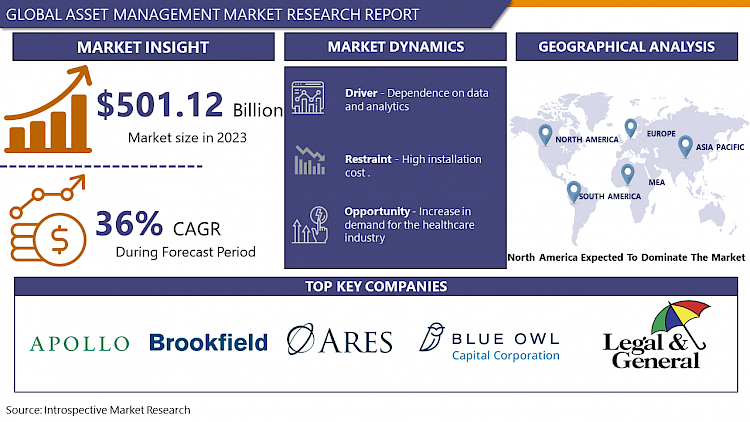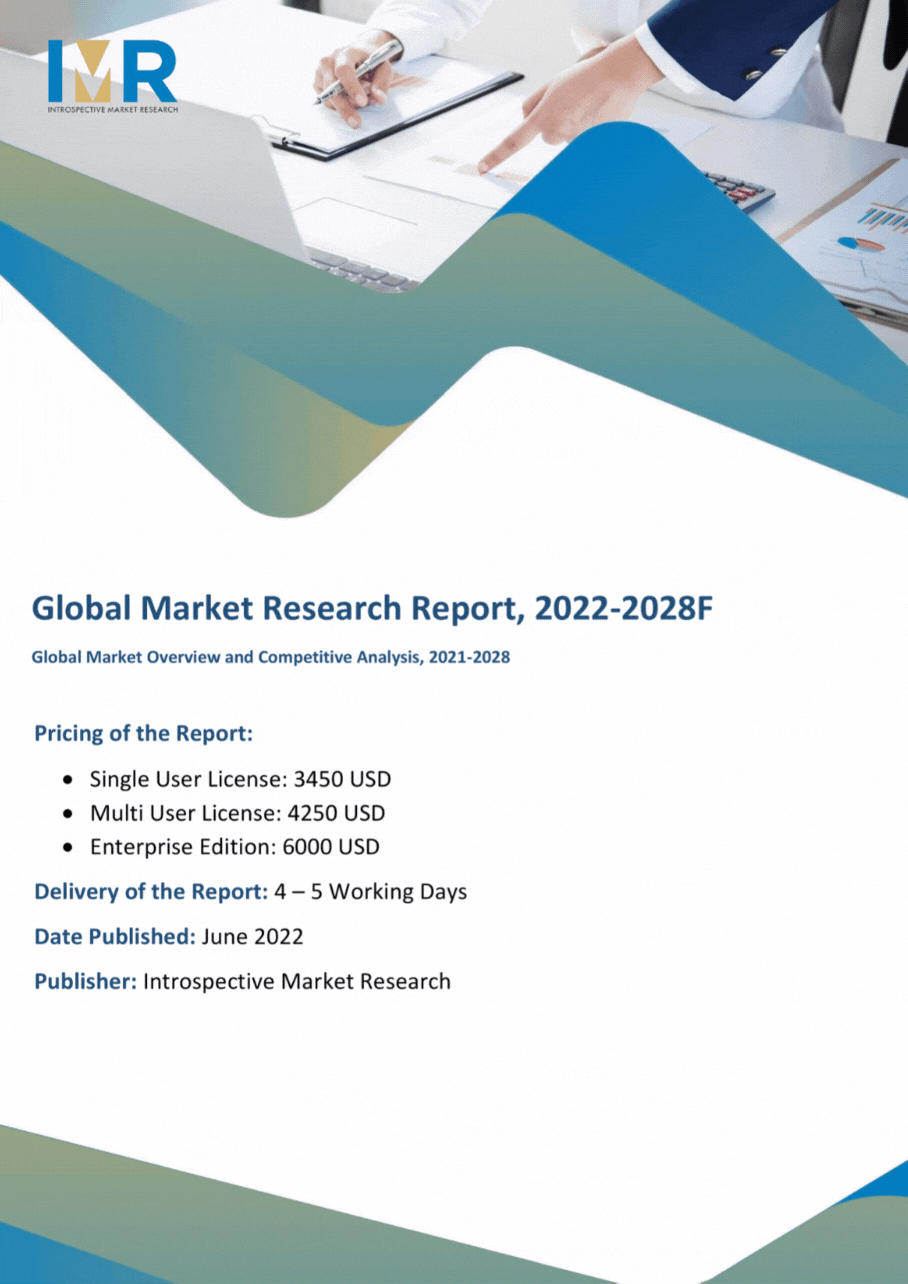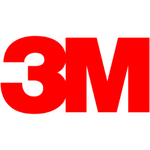Asset Management Systems Market Synopsis
Asset Management Systems Market Size Was Valued at USD 501.12 Billion in 2023 and is Projected to Reach USD 7976.12 Billion by 2030, Growing at a CAGR of 36% from 2024-2032.
Asset management comprises making decisions to improve value creation in arrangement with planned organizational purposes. It is a critical platform that directs the business strategy to enhance the strategic value of assets, extend their life cycle, and lower costs and environmental impact associated with the asset life cycle. It helps to invest, strategize, and maintain asset value within the circular economy. Organizations can transition to closed-loop systems that advance asset performance and spread lifespan by executing asset management morals in their business models.
- Asset management software is an exclusive application used to stock and track assets throughout their life cycle from purchase to clearance. It provides information to the organization such as where certain assets are located, who uses them, how they are used, and information about the assets. Asset management software is used to manage both software and hardware.
- Software asset management (SAM) involves overseeing, controlling, and calculating software assets as part of a business operation. SAM involves managing software licenses by identifying, acquiring, maintaining, and disposing of them. Organizations frequently have plentiful software licenses installed on computers, extending from hundreds to thousands. Having no inventory list makes it challenging to identify and track employees' licenses and the software that is installed on each device. SAM supports monitoring the company's software. SAM's key goal is to verify that employees and contractors are using software licenses perfectly. SAM also offers an understanding of license expenses to help individuals make educated choices when buying software. Handling software is a component of both IT Asset Management (ITAM) and Enterprise Asset Management (EAM). The growing significance and reputation of businesses are the cause for their increasing importance each day.

Asset Management Systems Market Trend Analysis
Dependence on data and analytics
- The Increasing addition of blockchain technology for asset tracking will strengthen the asset management industry. Blockchain technology is being discovered for its ability to provide a secure and transparent ledger for asset tracking and management mainly in healthcare and real estate where data honesty and attribution are crucial.
- Organisations across the globe are concentrating on making the best use of and performance of their physical assets like machinery, and infrastructure. Equipment and vehicle.
- Enterprise asset management (EAM) supports optimizing asset use and minimizing interruption.
- Many industries are subjected to strict supervisory necessities, and the EAM system contributes to ensuring that assets follow compliance standards, reducing the risk of fines and legal liabilities.
High installation cost
- The range offered by Real Time Location System (RTLS) and Radio Frequency Identification (RFID) solutions used in different applications varies from a few meters to a thousand meters. So, the cost of RTLS and RFID changes accordingly along with the technology and applications used in it.
- High initial cost is one of the restraint factors for adaptation of asset management.
- system System-based RTILS and RFID in healthcare, defense, logistics, manufacturing, and retail have high installation costs.
Increase in demand for the healthcare industry
- In the healthcare industry, keeping track of personnel and equipment can help to enhance patient care. Digitization has opened immense opportunities for Asset Management organizations to enhance their relationship with customers.
- Asset-intensive organizations have realized that amid the increasing competition, the success or failure of their business depends on addressing the complexities involved in their management.
- Due to this several asset-intensive organizations are investing in advanced and innovative solutions to significantly transform and upgrade their operational processes.
Asset Management Systems Market Segment Analysis:
The asset Management Systems Market is Segmented and divided into component, asset types, industry, function, and application.
By Component, the solution segment is expected to dominate the market during the forecast period
- Rushing digitization across the globe and the availability of an increasing number of data and images through global information systems will determine sales in the GPS segment.
- Integration of GPS in businesses or an organization increases the efficiency, maintenance, and development of the assets.
- The rising application of asset management solutions in the healthcare, energy, transportation, manufacturing, and IT industries will fuel the growth in the segment.
- The beginning of cutting-edge technologies in these solutions such as telematics, sensors, AI, and others is creating a conducive environment for growth in the market.
By Application, the aviation industry segment held the largest share of 78.8 in 2023
- Over 78.8% of asset management sales are expected to concentrate on the aviation industry. Increasing air traffic and the introduction of new aircraft models will improve the necessity for asset management solutions.
- As the aviation industry heavily relies on several independent assets, the necessity for asset management solutions has Increased heavily. key providers are organizing their asset management solutions to provide for the growing demand for refining profitability and reliability.
- Apart from this, the infrastructure segment is probably to observe the highest growth over the predicted period. To decrease the costs associated with the maintenance and procurement of infrastructure, leading companies are positioning asset management solutions with advanced technologies. This is predicted to generate growing chances in the market.
Asset Management Systems Market Regional Insights:
North America is Likely to Dominate the Market Over the Forecast period
- North America is projected to appear as the fastest-growing market over the forecast period. Growth is primarily attributed to the extension of IT & telecom, infrastructure, and aviation industries in the U.S.
- With an increasing volume of data and a growing number of IT firms in the U.S., the necessity for enterprise asset management solutions is scheduled to rise. On account of this, sales of asset management solutions across North America are predicted to account for nearly 32% of the demand share.
- An increasing number of start-ups and the development of modern organizations in the country will increase the growth in the area. The increasing nature of cloud-based solutions, and the adoption of AI, big data, and IoT in diverse industries, especially in India and China, will drive the demand in Asia Pacific.
Active Key Players in the Asset Management Systems Market
- Apollo Global Management (U.S.)
- Brookfield Corporation (Canada)
- Ares Management (U.S.)
- Blue Owl Capital (U.S.)
- Legal & General (U.K.)
- Corebridge Financial (U.S.)
- Amundi (France)
- Power Financial (Canada)
- SEI Investments (U.S.)
- DWS Group (Germany)
- Intermediate Capital Group (ICG) (U.K.)
- Schroders (U.K.)
- SBI Holdings (Japan)
- Hamilton Lane (U.S.)
- IGM Financial (Canada)
- Australian Foundation Investment Company (Australia)
- Onex (Canada)
- Jackson Financial (U.S.)
- Janus Henderson (U.K.)
- VZ Holding (Switzerland)
- Argo Investments (Australia)
- KBC Ancora (Belgium)
- Azimut Holding (Italy)
- Brederode (Netherlands)
- Cohen & Steers (U.S.)
Key Industry Developments in the Asset Management Systems Market:
- In February 2024, On Wednesday 7 February, Amundi announced that it had signed a binding contract for the purchase of Alpha Associates, an independent asset manager offering private markets multi-manager investment explanations. This purchase will position Amundi as an important European player in this space with a squad of over 70 experts, a combined ~€20bn of assets under management, an enhanced multi-manager offering spanning across private debt, infrastructure, private equity, and venture capital, and an enlarged client & environmental footprint. It will also reinforce the existence of secondary transactions, which is an applicable capability in the current market. The transaction raises Amundi’s offering of private market funds and tailor-made solutions for its existing institutional clients globally. Finally, it accelerates the development of suitable private market products for individual clients.
- In April 2024, Blue Owl Capital effectively acquired Kuvare Asset Management for $750 million. Blue Owl Capital Inc. is a foremost player in asset directors which announced that it has arrived at a definitive purchase agreement to obtain Kuvare Insurance Services (dba Kuvare Asset Management) for the price of $750 million. KAM is a boutique investment management firm that emphasizes providing asset management services to the insurance industry including Kuvare UK holdings.
|
Global Asset Management Systems Market |
|||
|
Base Year: |
2023 |
Forecast Period: |
2024-2032 |
|
Historical Data: |
2017 to 2023 |
Market Size in 2023: |
USD 501.12 Bn. |
|
Forecast Period 2024-32 CAGR: |
36 % |
Market Size in 2032: |
USD 7976.12 Bn. |
|
Segments Covered: |
By Component |
|
|
|
By Asset
|
|
||
|
By Industry |
|
||
|
By Function |
|
||
|
By Application |
|
||
|
By Region |
|
||
|
Key Market Drivers: |
|
||
|
Key Market Restraints: |
|
||
|
Key Opportunities: |
|
||
|
Companies Covered in the report: |
|
||
- INTRODUCTION
- RESEARCH OBJECTIVES
- RESEARCH METHODOLOGY
- RESEARCH PROCESS
- SCOPE AND COVERAGE
- Market Definition
- Key Questions Answered
- MARKET SEGMENTATION
- EXECUTIVE SUMMARY
- MARKET OVERVIEW
- GROWTH OPPORTUNITIES BY SEGMENT
- MARKET LANDSCAPE
- PORTER’S FIVE FORCES ANALYSIS
- Bargaining Power Of Supplier
- Threat Of New Entrants
- Threat Of Substitutes
- Competitive Rivalry
- Bargaining Power Among Buyers
- INDUSTRY VALUE CHAIN ANALYSIS
- MARKET DYNAMICS
- Drivers
- Restraints
- Opportunities
- Challenges
- MARKET TREND ANALYSIS
- REGULATORY LANDSCAPE
- PESTLE ANALYSIS
- PRICE TREND ANALYSIS
- PATENT ANALYSIS
- TECHNOLOGY EVALUATION
- MARKET IMPACT OF THE RUSSIA-UKRAINE WAR
- Geopolitical Market Disruptions
- Supply Chain Disruptions
- Instability in Emerging Markets
- ECOSYSTEM
- PORTER’S FIVE FORCES ANALYSIS
- ASSET MANAGEMENT SYSTEMS MARKET BY COMPONENT (2017-2032)
- ASSET MANAGEMENT SYSTEMS MARKET SNAPSHOT AND GROWTH ENGINE
- MARKET OVERVIEW
- SOLUTIONS
- Introduction And Market Overview
- Historic And Forecasted Market Size in Value (2017-2030F)
- Historic And Forecasted Market Size in Volume (2017-2030F)
- Key Market Trends, Growth Factors And Opportunities
- Geographic Segmentation Analysis
- Services
- ASSET MANAGEMENT SYSTEMS MARKET BY ASSET (2017-2032)
- ASSET MANAGEMENT SYSTEMS MARKET SNAPSHOT AND GROWTH ENGINE
- MARKET OVERVIEW
- DIGITAL
- Introduction And Market Overview
- Historic And Forecasted Market Size in Value (2017-2030F)
- Historic And Forecasted Market Size in Volume (2017-2030F)
- Key Market Trends, Growth Factors And Opportunities
- Geographic Segmentation Analysis
- IN-TRANSIT
- ASSET MANAGEMENT SYSTEMS MARKET BY INDUSTRY (2017-2032)
- ASSET MANAGEMENT SYSTEMS MARKET SNAPSHOT AND GROWTH ENGINE
- MARKET OVERVIEW
- FINANCIAL ASSET MANAGEMENT
- Introduction and Market Overview
- Historic And Forecasted Market Size in Value (2017-2030F)
- Historic And Forecasted Market Size in Volume (2017-2030F)
- Key Market Trends, Growth Factors And Opportunities
- Geographic Segmentation Analysis
- PHYSICAL AND INFRASTRUCTURE ASSET MANAGEMENT
- ENGINEERING ASSET MANAGEMENT
- SOFTWARE ASSET MANAGEMENT
- INTERNATIONAL STANDARD SERIES ON ASSET MANAGEMENT
- ENTERPRISE ASSET MANAGEMENT
- PUBLIC ASSET MANAGEMENT
- ASSET MANAGEMENT SYSTEMS MARKET BY FUNCTION (2017-2032)
- ASSET MANAGEMENT SYSTEMS MARKET SNAPSHOT AND GROWTH ENGINE
- MARKET OVERVIEW
- LOCATION
- Introduction and Market Overview
- Historic And Forecasted Market Size in Value (2017-2030F)
- Historic And Forecasted Market Size in Volume (2017-2030F)
- Key Market Trends, Growth Factors And Opportunities
- Geographic Segmentation Analysis
- MOVEMENT TRACKING
- REPAIR
- MAINTENANCE
- ASSET MANAGEMENT SYSTEMS MARKET BY APPLICATION (2017-2032)
- ASSET MANAGEMENT SYSTEMS MARKET SNAPSHOT AND GROWTH ENGINE
- MARKET OVERVIEW
- INFRASTRUCTURE
- Introduction and Market Overview
- Historic And Forecasted Market Size in Value (2017-2030F)
- Historic And Forecasted Market Size in Volume (2017-2030F)
- Key Market Trends, Growth Factors And Opportunities
- Geographic Segmentation Analysis
- ENTERPRISE
- AVIATION
- HEALTHCARE
- COMPANY PROFILES AND COMPETITIVE ANALYSIS
- COMPETITIVE LANDSCAPE
- Competitive Benchmarking
- ASSET MANAGEMENT SYSTEMS Market Share By Manufacturer (2023)
- Industry BCG Matrix
- Heat Map Analysis
- Mergers & Acquisitions
- Apollo Global Management (U.S.)
- Company Overview
- Key Executives
- Company Snapshot
- Role of the Company in the Market
- Sustainability and Social Responsibility
- Operating Business Segments
- Product Portfolio
- Business Performance (Production Volume, Sales Volume, Sales Margin, Production Capacity, Capacity Utilization Rate)
- Key Strategic Moves And Recent Developments
- SWOT Analysis
- Brookfield Corporation (Canada)
- Ares Management (U.S.)
- Blue Owl Capital (U.S.)
- Legal & General (U.K.)
- Corebridge Financial (U.S.)
- Amundi (France)
- Power Financial (Canada)
- SEI Investments (U.S.)
- DWS Group (Germany)
- Intermediate Capital Group (ICG) (U.K.)
- Schroders (U.K.)
- SBI Holdings (Japan)
- Hamilton Lane (U.S.)
- IGM Financial (Canada)
- Australian Foundation Investment Company (Australia)
- Onex (Canada)
- Jackson Financial (U.S.)
- Janus Henderson (U.K.)
- VZ Holding (Switzerland)
- Argo Investments (Australia)
- KBC Ancora (Belgium)
- Azimut Holding (Italy)
- Brederode (Netherlands)
- Cohen & Steers (U.S.)
- COMPETITIVE LANDSCAPE
- GLOBAL ASSET MANAGEMENT SYSTEMS MARKET BY REGION
- OVERVIEW
- NORTH AMERICA
- Key Market Trends, Growth Factors And Opportunities
- Key Manufacturers
- Historic And Forecasted Market Size By COMPONENT
- Historic And Forecasted Market Size By ASSET TYPE
- Historic And Forecasted Market Size By INDUSTRY TYPE
- Historic And Forecasted Market Size By FUNCTION TYPE
- Historic And Forecasted Market Size BY APPLICATION TYPE
- Historic And Forecasted Market Size By Country
- USA
- Canada
- Mexico
- EASTERN EUROPE
- Key Market Trends, Growth Factors And Opportunities
- Key Manufacturers
- Historic And Forecasted Market Size By Segments
- Historic And Forecasted Market Size By Country
- Russia
- Bulgaria
- The Czech Republic
- Hungary
- Poland
- Romania
- Rest Of Eastern Europe
- WESTERN EUROPE
- Key Market Trends, Growth Factors And Opportunities
- Key Manufacturers
- Historic And Forecasted Market Size By Segments
- Historic And Forecasted Market Size By Country
- Germany
- United Kingdom
- France
- The Netherlands
- Italy
- Spain
- Rest Of Western Europe
- ASIA PACIFIC
- Key Market Trends, Growth Factors And Opportunities
- Key Manufacturers
- Historic And Forecasted Market Size By Segments
- Historic And Forecasted Market Size By Country
- China
- India
- Japan
- South Korea
- Malaysia
- Thailand
- Vietnam
- The Philippines
- Australia
- New-Zealand
- Rest Of APAC
- MIDDLE EAST & AFRICA
- Key Market Trends, Growth Factors And Opportunities
- Key Manufacturers
- Historic And Forecasted Market Size By Segments
- Historic And Forecasted Market Size By Country
- Turkey
- Bahrain
- Kuwait
- Saudi Arabia
- Qatar
- UAE
- Israel
- South Africa
- SOUTH AMERICA
- Key Market Trends, Growth Factors And Opportunities
- Key Manufacturers
- Historic And Forecasted Market Size By Segments
- Historic And Forecasted Market Size By Country
- Brazil
- Argentina
- Rest of South America
- INVESTMENT ANALYSIS
- ANALYST VIEWPOINT AND CONCLUSION
- Recommendations and Concluding Analysis
- Potential Market Strategies
|
Global Asset Management Systems Market |
|||
|
Base Year: |
2023 |
Forecast Period: |
2024-2032 |
|
Historical Data: |
2017 to 2023 |
Market Size in 2023: |
USD 501.12 Bn. |
|
Forecast Period 2024-32 CAGR: |
36 % |
Market Size in 2032: |
USD 7976.12 Bn. |
|
Segments Covered: |
By Component |
|
|
|
By Asset
|
|
||
|
By Industry |
|
||
|
By Function |
|
||
|
By Application |
|
||
|
By Region |
|
||
|
Key Market Drivers: |
|
||
|
Key Market Restraints: |
|
||
|
Key Opportunities: |
|
||
|
Companies Covered in the report: |
|
||
LIST OF TABLES
TABLE 001. EXECUTIVE SUMMARY
TABLE 002. ASSET MANAGEMENT SYSTEMS MARKET BARGAINING POWER OF SUPPLIERS
TABLE 003. ASSET MANAGEMENT SYSTEMS MARKET BARGAINING POWER OF CUSTOMERS
TABLE 004. ASSET MANAGEMENT SYSTEMS MARKET COMPETITIVE RIVALRY
TABLE 005. ASSET MANAGEMENT SYSTEMS MARKET THREAT OF NEW ENTRANTS
TABLE 006. ASSET MANAGEMENT SYSTEMS MARKET THREAT OF SUBSTITUTES
TABLE 007. ASSET MANAGEMENT SYSTEMS MARKET BY TYPE
TABLE 008. SOFTWARE MARKET OVERVIEW (2016-2028)
TABLE 009. SERVICE MARKET OVERVIEW (2016-2028)
TABLE 010. ASSET MANAGEMENT SYSTEMS MARKET BY APPLICATION
TABLE 011. APPLICATION A MARKET OVERVIEW (2016-2028)
TABLE 012. APPLICATION B MARKET OVERVIEW (2016-2028)
TABLE 013. APPLICATION C MARKET OVERVIEW (2016-2028)
TABLE 014. NORTH AMERICA ASSET MANAGEMENT SYSTEMS MARKET, BY TYPE (2016-2028)
TABLE 015. NORTH AMERICA ASSET MANAGEMENT SYSTEMS MARKET, BY APPLICATION (2016-2028)
TABLE 016. N ASSET MANAGEMENT SYSTEMS MARKET, BY COUNTRY (2016-2028)
TABLE 017. EUROPE ASSET MANAGEMENT SYSTEMS MARKET, BY TYPE (2016-2028)
TABLE 018. EUROPE ASSET MANAGEMENT SYSTEMS MARKET, BY APPLICATION (2016-2028)
TABLE 019. ASSET MANAGEMENT SYSTEMS MARKET, BY COUNTRY (2016-2028)
TABLE 020. ASIA PACIFIC ASSET MANAGEMENT SYSTEMS MARKET, BY TYPE (2016-2028)
TABLE 021. ASIA PACIFIC ASSET MANAGEMENT SYSTEMS MARKET, BY APPLICATION (2016-2028)
TABLE 022. ASSET MANAGEMENT SYSTEMS MARKET, BY COUNTRY (2016-2028)
TABLE 023. MIDDLE EAST & AFRICA ASSET MANAGEMENT SYSTEMS MARKET, BY TYPE (2016-2028)
TABLE 024. MIDDLE EAST & AFRICA ASSET MANAGEMENT SYSTEMS MARKET, BY APPLICATION (2016-2028)
TABLE 025. ASSET MANAGEMENT SYSTEMS MARKET, BY COUNTRY (2016-2028)
TABLE 026. SOUTH AMERICA ASSET MANAGEMENT SYSTEMS MARKET, BY TYPE (2016-2028)
TABLE 027. SOUTH AMERICA ASSET MANAGEMENT SYSTEMS MARKET, BY APPLICATION (2016-2028)
TABLE 028. ASSET MANAGEMENT SYSTEMS MARKET, BY COUNTRY (2016-2028)
TABLE 029. OPENTEXT: SNAPSHOT
TABLE 030. OPENTEXT: BUSINESS PERFORMANCE
TABLE 031. OPENTEXT: PRODUCT PORTFOLIO
TABLE 032. OPENTEXT: KEY STRATEGIC MOVES AND DEVELOPMENTS
TABLE 032. ORACLE CORPORATION: SNAPSHOT
TABLE 033. ORACLE CORPORATION: BUSINESS PERFORMANCE
TABLE 034. ORACLE CORPORATION: PRODUCT PORTFOLIO
TABLE 035. ORACLE CORPORATION: KEY STRATEGIC MOVES AND DEVELOPMENTS
TABLE 035. ADOBE SYSTEMS INCORPORATED: SNAPSHOT
TABLE 036. ADOBE SYSTEMS INCORPORATED: BUSINESS PERFORMANCE
TABLE 037. ADOBE SYSTEMS INCORPORATED: PRODUCT PORTFOLIO
TABLE 038. ADOBE SYSTEMS INCORPORATED: KEY STRATEGIC MOVES AND DEVELOPMENTS
TABLE 038. HEWLETT-PACKARD (HP): SNAPSHOT
TABLE 039. HEWLETT-PACKARD (HP): BUSINESS PERFORMANCE
TABLE 040. HEWLETT-PACKARD (HP): PRODUCT PORTFOLIO
TABLE 041. HEWLETT-PACKARD (HP): KEY STRATEGIC MOVES AND DEVELOPMENTS
TABLE 041. ADAM SOFTWARE: SNAPSHOT
TABLE 042. ADAM SOFTWARE: BUSINESS PERFORMANCE
TABLE 043. ADAM SOFTWARE: PRODUCT PORTFOLIO
TABLE 044. ADAM SOFTWARE: KEY STRATEGIC MOVES AND DEVELOPMENTS
TABLE 044. IBM CORPORATION: SNAPSHOT
TABLE 045. IBM CORPORATION: BUSINESS PERFORMANCE
TABLE 046. IBM CORPORATION: PRODUCT PORTFOLIO
TABLE 047. IBM CORPORATION: KEY STRATEGIC MOVES AND DEVELOPMENTS
TABLE 047. EMC CORPORATION: SNAPSHOT
TABLE 048. EMC CORPORATION: BUSINESS PERFORMANCE
TABLE 049. EMC CORPORATION: PRODUCT PORTFOLIO
TABLE 050. EMC CORPORATION: KEY STRATEGIC MOVES AND DEVELOPMENTS
TABLE 050. COGNIZANT TECHNOLOGY SOLUTIONS: SNAPSHOT
TABLE 051. COGNIZANT TECHNOLOGY SOLUTIONS: BUSINESS PERFORMANCE
TABLE 052. COGNIZANT TECHNOLOGY SOLUTIONS: PRODUCT PORTFOLIO
TABLE 053. COGNIZANT TECHNOLOGY SOLUTIONS: KEY STRATEGIC MOVES AND DEVELOPMENTS
TABLE 053. NORTHPLAINS SYSTEMS: SNAPSHOT
TABLE 054. NORTHPLAINS SYSTEMS: BUSINESS PERFORMANCE
TABLE 055. NORTHPLAINS SYSTEMS: PRODUCT PORTFOLIO
TABLE 056. NORTHPLAINS SYSTEMS: KEY STRATEGIC MOVES AND DEVELOPMENTS
TABLE 056. WIDEN ENTERPRISES: SNAPSHOT
TABLE 057. WIDEN ENTERPRISES: BUSINESS PERFORMANCE
TABLE 058. WIDEN ENTERPRISES: PRODUCT PORTFOLIO
TABLE 059. WIDEN ENTERPRISES: KEY STRATEGIC MOVES AND DEVELOPMENTS
TABLE 059. HOUSE & CO: SNAPSHOT
TABLE 060. HOUSE & CO: BUSINESS PERFORMANCE
TABLE 061. HOUSE & CO: PRODUCT PORTFOLIO
TABLE 062. HOUSE & CO: KEY STRATEGIC MOVES AND DEVELOPMENTS
TABLE 062. BRANDWORKZ: SNAPSHOT
TABLE 063. BRANDWORKZ: BUSINESS PERFORMANCE
TABLE 064. BRANDWORKZ: PRODUCT PORTFOLIO
TABLE 065. BRANDWORKZ: KEY STRATEGIC MOVES AND DEVELOPMENTS
TABLE 065. BYNDER: SNAPSHOT
TABLE 066. BYNDER: BUSINESS PERFORMANCE
TABLE 067. BYNDER: PRODUCT PORTFOLIO
TABLE 068. BYNDER: KEY STRATEGIC MOVES AND DEVELOPMENTS
TABLE 068. CANTO: SNAPSHOT
TABLE 069. CANTO: BUSINESS PERFORMANCE
TABLE 070. CANTO: PRODUCT PORTFOLIO
TABLE 071. CANTO: KEY STRATEGIC MOVES AND DEVELOPMENTS
TABLE 071. WEBDAM: SNAPSHOT
TABLE 072. WEBDAM: BUSINESS PERFORMANCE
TABLE 073. WEBDAM: PRODUCT PORTFOLIO
TABLE 074. WEBDAM: KEY STRATEGIC MOVES AND DEVELOPMENTS
TABLE 074. QBANK DAM: SNAPSHOT
TABLE 075. QBANK DAM: BUSINESS PERFORMANCE
TABLE 076. QBANK DAM: PRODUCT PORTFOLIO
TABLE 077. QBANK DAM: KEY STRATEGIC MOVES AND DEVELOPMENTS
TABLE 077. ADGISTICS LIMITED: SNAPSHOT
TABLE 078. ADGISTICS LIMITED: BUSINESS PERFORMANCE
TABLE 079. ADGISTICS LIMITED: PRODUCT PORTFOLIO
TABLE 080. ADGISTICS LIMITED: KEY STRATEGIC MOVES AND DEVELOPMENTS
LIST OF FIGURES
FIGURE 001. YEARS CONSIDERED FOR ANALYSIS
FIGURE 002. SCOPE OF THE STUDY
FIGURE 003. ASSET MANAGEMENT SYSTEMS MARKET OVERVIEW BY REGIONS
FIGURE 004. PORTER'S FIVE FORCES ANALYSIS
FIGURE 005. BARGAINING POWER OF SUPPLIERS
FIGURE 006. COMPETITIVE RIVALRYFIGURE 007. THREAT OF NEW ENTRANTS
FIGURE 008. THREAT OF SUBSTITUTES
FIGURE 009. VALUE CHAIN ANALYSIS
FIGURE 010. PESTLE ANALYSIS
FIGURE 011. ASSET MANAGEMENT SYSTEMS MARKET OVERVIEW BY TYPE
FIGURE 012. SOFTWARE MARKET OVERVIEW (2016-2028)
FIGURE 013. SERVICE MARKET OVERVIEW (2016-2028)
FIGURE 014. ASSET MANAGEMENT SYSTEMS MARKET OVERVIEW BY APPLICATION
FIGURE 015. APPLICATION A MARKET OVERVIEW (2016-2028)
FIGURE 016. APPLICATION B MARKET OVERVIEW (2016-2028)
FIGURE 017. APPLICATION C MARKET OVERVIEW (2016-2028)
FIGURE 018. NORTH AMERICA ASSET MANAGEMENT SYSTEMS MARKET OVERVIEW BY COUNTRY (2016-2028)
FIGURE 019. EUROPE ASSET MANAGEMENT SYSTEMS MARKET OVERVIEW BY COUNTRY (2016-2028)
FIGURE 020. ASIA PACIFIC ASSET MANAGEMENT SYSTEMS MARKET OVERVIEW BY COUNTRY (2016-2028)
FIGURE 021. MIDDLE EAST & AFRICA ASSET MANAGEMENT SYSTEMS MARKET OVERVIEW BY COUNTRY (2016-2028)
FIGURE 022. SOUTH AMERICA ASSET MANAGEMENT SYSTEMS MARKET OVERVIEW BY COUNTRY (2016-2028)
Frequently Asked Questions :
The forecast period in the Asset Management Systems Market research report is 2024-2032.
Apollo Global Management (U.S.), Brookfield Corporation (Canada), Ares Management (U.S.), Blue Owl Capital (U.S.), Legal & General (U.K.), Corbridge Financial (U.S.), Amundi (France), Power Financial (Canada), SEI Investments (U.S.), DWS Group (Germany), Intermediate Capital Group (ICG) (U.K.), Schroders (U.K.), SBI Holdings (Japan), Hamilton Lane (U.S.), IGM Financial (Canada), Australian Foundation Investment Company (Australia), Onex (Canada), Jackson Financial (U.S.), Janus Henderson (U.K.), VZ Holding (Switzerland), Argo Investments (Australia), KBC Ancora (Belgium), Azimut Holding (Italy), Brederode (Netherlands), Cohen & Steers (U.S.) and Other Major Players.
The Asset Management Systems Market is segmented into Components, assets, Industry, Function, Application, and region. By components, the market is categorized into Solutions and services. By asset, the market is categorized into Digital, in In-transit. By industry, the market is categorized into Financial asset management, Physical and Infrastructure asset management, Engineering asset management, Software asset management, International Standard Series on Asset Management, Enterprise asset management, and Public asset management. By function, the market is categorized into Location, Movement Tracking, Repair, and Maintenance. By application, the market is categorized into Infrastructure, Enterprise, Healthcare, and Aviation. By region, it is analyzed across North America (U.S.; Canada; Mexico), Eastern Europe (Bulgaria; The Czech Republic; Hungary; Poland; Romania; Rest of Eastern Europe), Western Europe (Germany; UK; France; Netherlands; Italy; Russia; Spain; Rest of Western Europe), Asia-Pacific (China; India; Japan; Southeast Asia, etc.), South America (Brazil; Argentina, etc.), Middle East & Africa (Saudi Arabia; South Africa, etc.).
Asset management is the art and science of making decisions that optimize value production according to established organizational goals. It is a key enabler and platform that informs business strategy to “engineer” the strategic value of assets, optimize their life cycle, and reduce asset life cycle costs and environmental impact. It is a tool to invest, plan, and preserve the value of assets in the circular economy. By using asset management principles to adapt their business models, organizations can move towards closed-loop systems that optimize asset performance and extend lifespan.
Asset Management Systems Market Size Was Valued at USD 501.12 Billion in 2023 and is Projected to Reach USD 7976.12 Billion by 2032, Growing at a CAGR of 36% from 2024-2032.


































